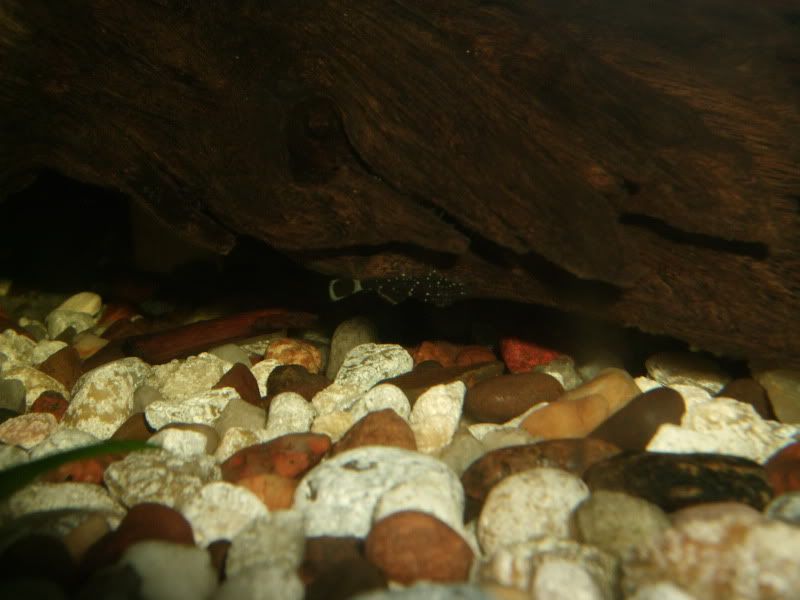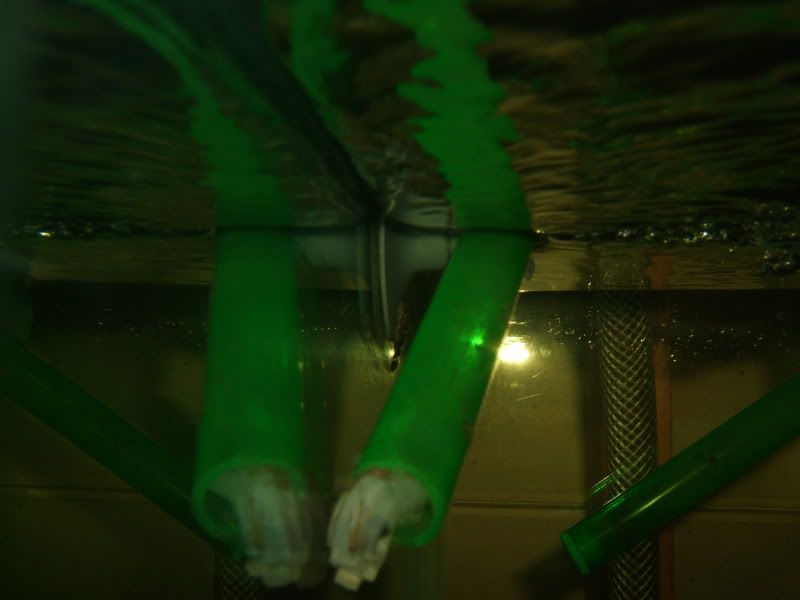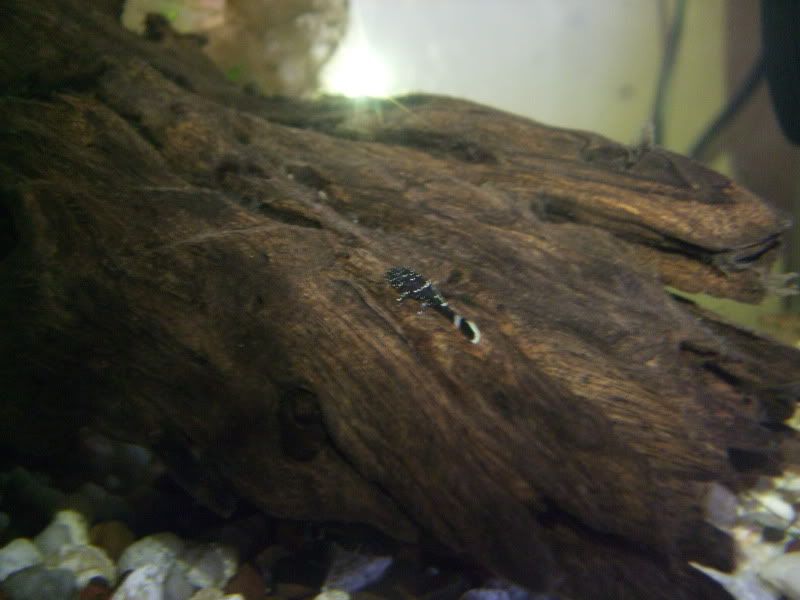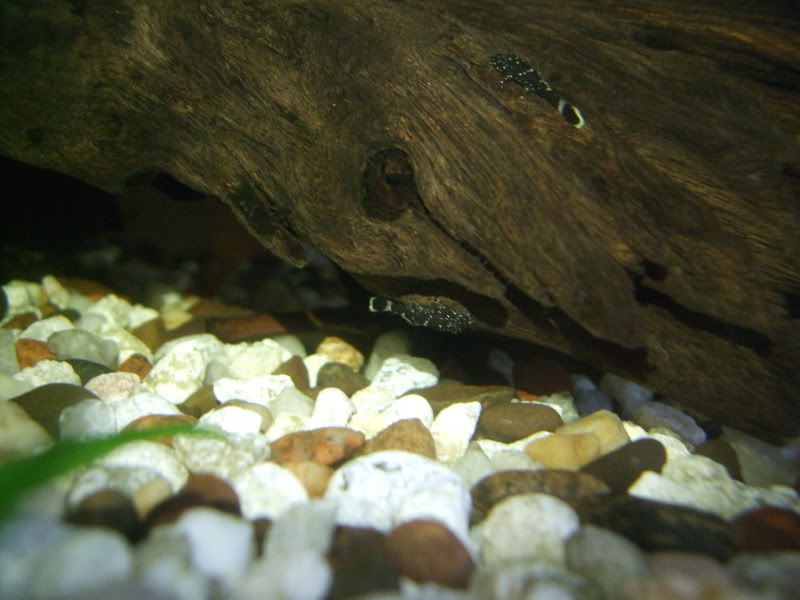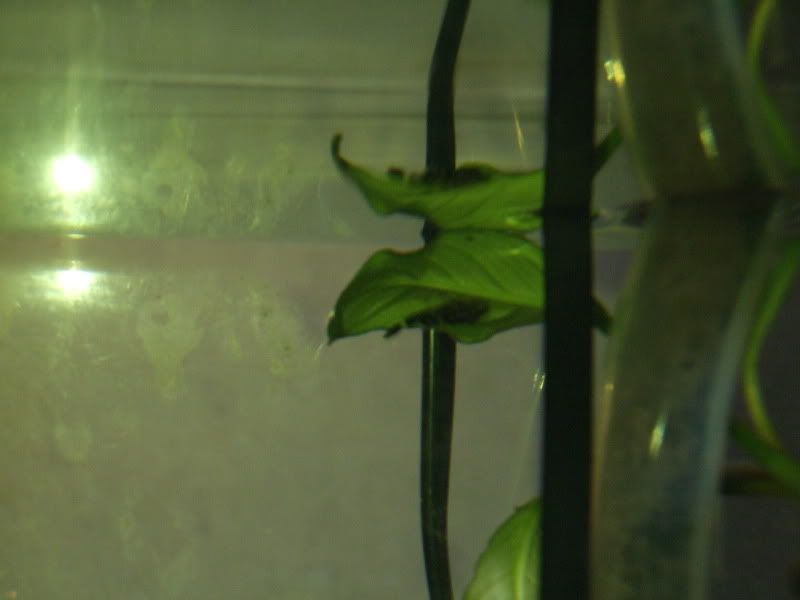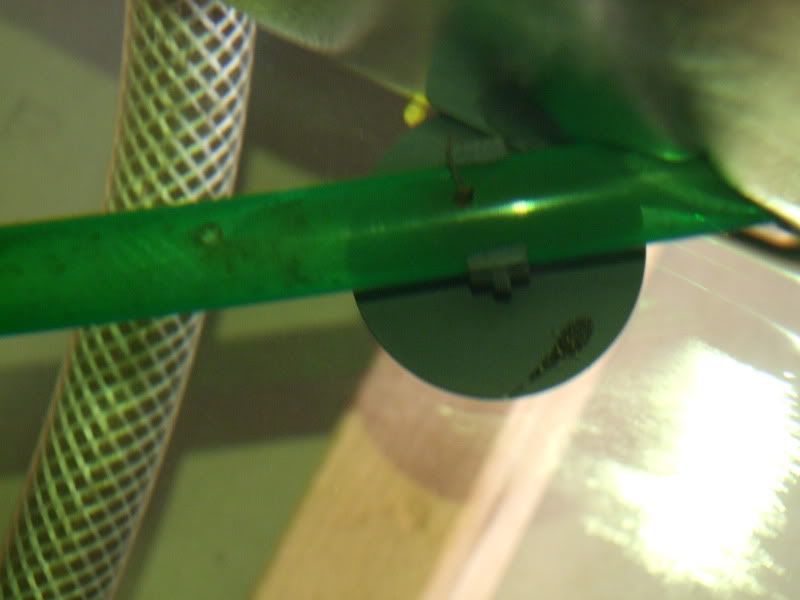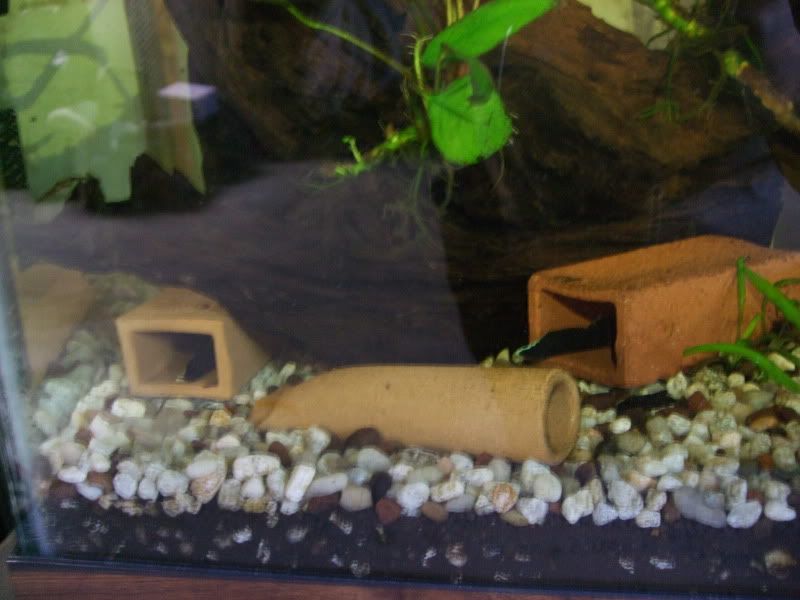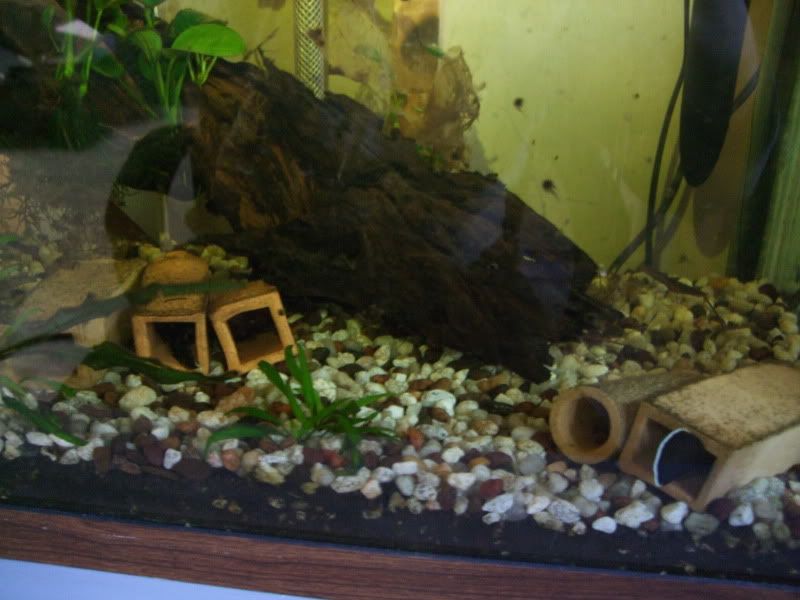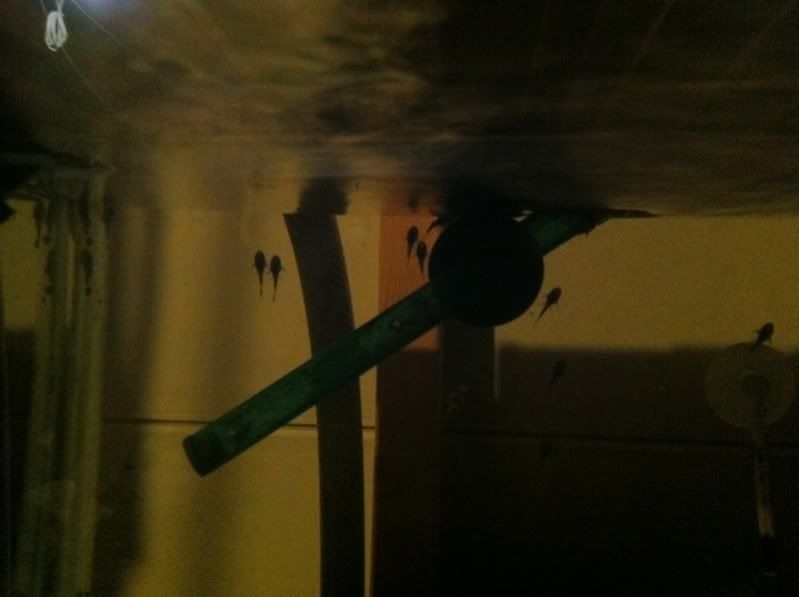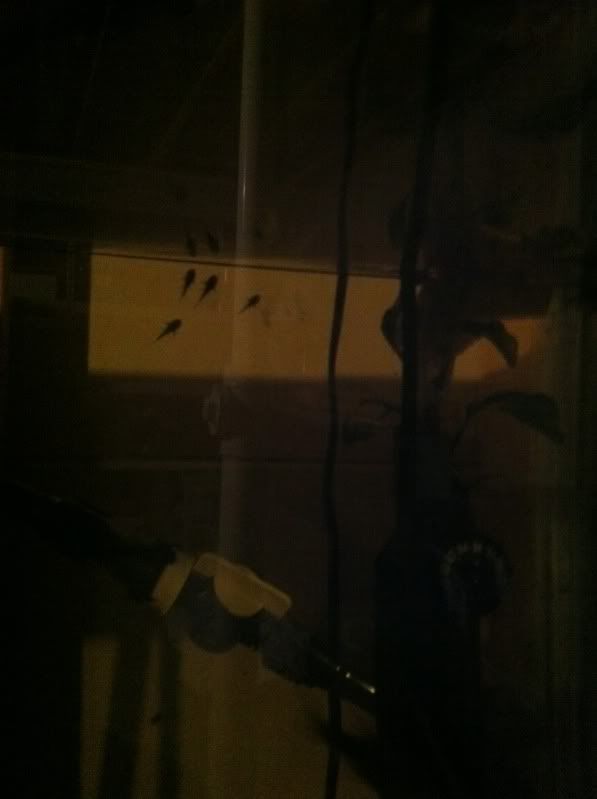Page 1 of 2
My 183's mated and I didnt even know it!!!
Posted: 14 Feb 2011, 17:02
by bsmith
Re: My 183's mated and I didnt even know it!!!
Posted: 14 Feb 2011, 17:05
by MatsP
Congratulations. I bet you will find a few more in the coming day(s).
--
Mats
Re: My 183's mated and I didnt even know it!!!
Posted: 14 Feb 2011, 17:13
by bsmith
Any idea on their approx age? According to the catelog, they look to be around a few weeks.
Re: My 183's mated and I didnt even know it!!!
Posted: 14 Feb 2011, 17:19
by MatsP
I don't know from personal experience, but I'd say they are pretty recently "released" - which probably means the spawn was two or so weeks ago (at least the "common" birstlenose is about two weeks to free-swimming, but it also depends on the temperature in the water)
--
Mats
Re: My 183's mated and I didnt even know it!!!
Posted: 14 Feb 2011, 18:22
by L number Banana

Sweet pics! Congrats, beautiful fish.
My otos do that to me, one day there's eight and next day there's 13?? I'm up to 16 and haven't caught them at fry stage yet. The tank started with four.
Re: My 183's mated and I didnt even know it!!!
Posted: 14 Feb 2011, 19:00
by 2wheelsx2
Congratulations. And very cool indeed.
Re: My 183's mated and I didnt even know it!!!
Posted: 14 Feb 2011, 20:19
by Taratron
I've always loved these bristlenose, but the Catelog says they need low pH and supersoft water to breed. Is that your experience too?
Re: My 183's mated and I didnt even know it!!!
Posted: 14 Feb 2011, 21:37
by bsmith
Taratron wrote:I've always loved these bristlenose, but the Catelog says they need low pH and supersoft water to breed. Is that your experience too?
100% CORRECT.
I haven't tested the ph in a year but last time I did it was at 6 or below TDS is below 100. I have tons of wood in the tank, Almond leaves and from time to time alder cones. Temp is always at 82. I use 100% Ro/Di water for WC's and they are done maybe every month at 30-40 percent.
Re: My 183's mated and I didnt even know it!!!
Posted: 15 Feb 2011, 02:11
by corybrummie2010
Congratulations and your pics are awesome by the way

Re: My 183's mated and I didnt even know it!!!
Posted: 15 Feb 2011, 02:52
by bsmith
Thank you all for the kind words. I really can say that this hit me blindly as I honestly thought that my female fish were still at least 4 months from spawning age. I did know however that my parameters were conducive for breeding and that I had created just about the perfect bio-tope for them to breed in and as soon as they were of age breeding should occur.
Here are a few things that I did that IMO helped create this spawn.
Make the environment as acidic as possible to not only create a natural setting for the fish so they felt comfortable enough to breed but also to create an anti bacterial environment (maybe the most important of all) to help stave off infection, which is a leading cause of low/no fry being viable. This was attained by using pure RO/DI water that was buffered by nothing, allowing the organics (driftwood, almond leaves, alder cones) to do their thing. Unfortunately I'm just not that great at measuring and recording the exact amounts of these organics so this was all just an add and cross your fingers approach. I can say one thing though, the water is and has been the color of a weak tea from the beginning.
Keeping the temp at a steady 82. With this high of a temp and having a lot of surface agitation causes quite a lot of evaporation and causes me to top off the tank every couple of days.
Feed A LOT, I repeat A LOT! With high quality foods. I strictly feed my fish Kens food that I have available in the Sale section. Hopefully this does not appear as a sales pitch but I think you can see from the results the stuff is fantastic. I feed a mix of Earthworm/Spirulina/Veggie sticks w/Calcium in a 1-1-1 ratio I have pre made in a baggie. I also have Beef heart/Earthworm/spirulina/Color-max flakes pre mixed in a baggy in a 1-1-1-1 ratio as well. Feedings occur really whenever I feel but I try to do it daily with sticks in the morning and flake in the evening.
When I get home I will take readings and try to provide you with as accurate a depiction of the parameters as possible. I will also really try to get a good representation of the actual fry that are in the tank too. Hopefully some better pics will be forthcoming too.
Here is a link to my journal of the tank over at TPT.
http://www.plantedtank.net/forums/tank- ... urnal.html
Re: My 183's mated and I didnt even know it!!!
Posted: 15 Feb 2011, 03:08
by andywoolloo
they are so cute!! good job!!

Re: My 183's mated and I didnt even know it!!!
Posted: 15 Feb 2011, 06:09
by bsmith
andywoolloo wrote:they are so cute!! good job!!

Thank you, I feel great about this finally happening. I was contemplating trying to get a few extra females to help with the ratio but after emailing some importers/breeders it became apparent to me very quickly (by never ever getting a response after multiple emails from any of them) that they are just out there for our money and could care less about a hobbyist who is trying to breed these seldomly breed fish. I could understand if I asked to send me specific sexes of a hard to ID fish but with these its about as easy as it gets. And before anyone gets pissy thinking I was asking this with sub adult fish, please give me some credit. The fish were either adult or very close and the males were showing prominent bristles.
So about the parameters and stuff. I forgot I threw all my kits away since they are horribly inaccurate and I just had no idea how old any of them were too. I just got a Lamotte Nitrate kit and a Seachem Phosphate kit so I did those two at least.
Phosphate looked to be about 2.5ppm and nitrate was between 3-5pp,. Thats what I was thinking for nitrate but the phosphate seems high. Then again I could either be reading it wrong, it could be too old or it just sucks as a test kit.
HTH
Re: My 183's mated and I didnt even know it!!!
Posted: 15 Feb 2011, 06:11
by bsmith
BTW, im also in the process of uploading some videos to Vimeo but I think im going to fall asleep before im done with all 4. Too bad I cant do all of them at once instead of one at a time. HD videos take so long too.
Re: My 183's mated and I didnt even know it!!!
Posted: 15 Feb 2011, 08:23
by Barbie
That is fantastic news! My only input on the thread is to be sure to add a small piece of calceous rock or shell somewhere to avoid the pH getting too low. I blinded my original L183 with a pH crash. He was still very effective as a breeder for a year or more, but I really felt bad. I hadn't realized that was a possibility and I was told later that it is something others have also experienced.
Those fry eat more than even the adults. I'm happy to see you too had better luck at warmer temperatures. When those fry get about 1" long they are the cutest fish ever!
Barbie
Re: My 183's mated and I didnt even know it!!!
Posted: 15 Feb 2011, 09:25
by Birger Amundsen
Re: My 183's mated and I didnt even know it!!!
Posted: 15 Feb 2011, 15:40
by bsmith
Barbie wrote:That is fantastic news! My only input on the thread is to be sure to add a small piece of calceous rock or shell somewhere to avoid the pH getting too low. I blinded my original L183 with a pH crash. He was still very effective as a breeder for a year or more, but I really felt bad. I hadn't realized that was a possibility and I was told later that it is something others have also experienced.
Those fry eat more than even the adults. I'm happy to see you too had better luck at warmer temperatures. When those fry get about 1" long they are the cutest fish ever!
Barbie
Ph crashes, something I have been trying to dispel in high tech co2 injected tanks now for the past few months. Maybe in a setting like this it is possible but I am still trying to figure out how they happen. In a planted tank with co2 I have the has a GH of less than 1 degree I pump copious amounts of gas in there and have yet to have an issue, this tank is stocked with Discus and Cardinal tetras (pretty sensitive to fluctuations). It is also the same case on a low tech tank I have that houses high grade CRS and more difficult Crypts, almost no "buffering" capacity and still mot ever an issue.
If you could shed some light onto the subject it would be greatly appreciated.
Re: My 183's mated and I didnt even know it!!!
Posted: 15 Feb 2011, 16:48
by MatsP
A pH crash happens when there is no buffer (or other alkaline substances) that counteract the acidity in the nitrate (or any any other acidifying substance). The usual/natural buffer is bicarbonate. If your KH is zero, then your pH will (given enough food in the tank with no water changes) drop to about pH 4.0 - I'm not sure what CO2 injection does to this. It will probably not go lower than 4.0 (or thereabouts) because the effect of various humic acids and other organic substances (according to Mike Noren) is again a buffer substance.
--
Mats
Re: My 183's mated and I didnt even know it!!!
Posted: 15 Feb 2011, 23:40
by bsmith
Im still skeptical about the ph crashes but that will be reserved for another thread.
I finally got the videos uploaded of the babies that I took last night. Here they are.
http://vimeo.com/19962012
http://vimeo.com/19996080
http://vimeo.com/19995313
http://vimeo.com/19992939
Re: My 183's mated and I didnt even know it!!!
Posted: 15 Feb 2011, 23:44
by apistomaster
Sorry, we posted closse in time but you just beat me so forgive the digressions below, but I wrote too much to through away.

The first batch of a new species is always a memorable time. I have been tempted since I know where Barbie lives, too get and keep these but I decided I wasn't dedicated enough to manage them in their own very soft, acidic water. They are a pretty species too but I had set an arbitrarily Max size of new species must be smaller and in Ancistrus it is A. claro which I aam getting ready to seriously try to raise them. I wasted 8 1" juvies I got from Barbie about the time I was finding I cared about plecos as much a wild Discus. Part of my learning curve with new Ancistrus \. Ancistrus running up to about 2-1/2" adult size makes them ideal for so many of those keeping planted tanks of 20 to 40 gals.
These L183 are one of the most beautiful and the perfect resident algae eating group in a Heckel Discus tank.
But I play fast and loose about RO water, Actually that 98% effective reduction in the TDS from an RO water but NOT run through a tertiary mixed bed ion exchange resins.
I can live with 2% of my RO water is the level of remaining TDS. Even now, at 240 ppm from tap down to 2%.~5 TDS. That small amount is augmented by the complex of organic materials from the wood and the minerals produced by fish excretion to a fairly safe, steady but livable and for these black water types of Ancistrus just the type best for any very soft, acid water set up for Heckel and Green Discus, the more extreme acids end.
Really regular and sufficient fresh water changes really hold the balance. Their is in such a good maintainance these fish require,the addition of a calacareous source of modest proportions can do much to prevent a pH crash. They are called crashes for a reason. A small bit of shells or piece of small limestone. Enough to prevent learning about a pH crash the hard way.
Just think about it. Sounds like you are off to a very good start and may you raise many a brood.
Forgot. Despite using 100% RO water the tank runs 100 ppm TDS? You would already require either a calcareous material is present or you have had to added Sodium Chloride. This TDS increase is fine because it is easily kept in balance. If the TDS was testing 10 to 15 ppm then most substances should be from the wood and fish excretions. It is down here where the pH can snap.
Re: My 183's mated and I didnt even know it!!!
Posted: 16 Feb 2011, 00:46
by MatsP
Those white stones look suspicously calciferous to me.
--
Mats
Re: My 183's mated and I didnt even know it!!!
Posted: 16 Feb 2011, 01:52
by bsmith
I know they do but I can tell 100% that ther are your normal hardened epoxy clown puke gravel.
Re: My 183's mated and I didnt even know it!!!
Posted: 16 Feb 2011, 10:33
by dw1305
Hi all,
pH crashes, something I have been trying to dispel in high tech co2 injected tanks now for the past few months. Maybe in a setting like this it is possible but I am still trying to figure out how they happen. In a planted tank with co2 I have the has a GH of less than 1 degree I pump copious amounts of gas in there and have yet to have an issue, this tank is stocked with Discus and Cardinal tetras (pretty sensitive to fluctuations). It is also the same case on a low tech tank I have that houses high grade CRS and more difficult Crypts, almost no "buffering" capacity and still not ever an issue.
I think this is a much misunderstood subject area. We had a thread about this a while ago <
http://www.planetcatfish.com/forum/view ... =5&t=32162>. I understand that people have had their pH decline rapidly, and at the same time they have had loss of (or damage to) much loved (and often expensive) fish and they are fully entitled to their opinions based upon their own experience, but the pH decline and damage to livestock are both symptoms of other problems, it is not the pH "crash" directly causing the fish death.
Bio-acidification
I'd recommend that people read this, as it covers the relevant points and is better written than I can manage. <
http://www.skepticalaquarist.com/docs/w ... acid.shtml>
As other posters have pointed out the there is a fairly straight forward relationship between pH and KH. I'd go a lot further
"any pH value quoted without some measure of the carbonate buffering" is basically valueless.
The concept of buffering isn't something that is instantly obvious so I'll use the "Cup of Tea" analogy, it isn't chemically correct but hopefully it is easy to follow:
"
I think of the concept of buffering like putting 4 spoonfuls of sugar in your tea. Once the tea is really sweet ("the solution is fully saturated"), some sugar will remain undissolved in the bottom of the cup. If you drink some of that cup of tea, then pour some more tea into it from the tea pot you have diluted your solution and it is no longer fully saturated with sugar. As soon as the solution isn't fully saturated with sugar some more of the sugar will now go into solution from the reservoir at the bottom of the cup. In this case the undissolved sugar reservoir is your buffer".
I'll also try and summarise (some chemistry) the various components relevant to pH, Hardness and TDS :
pH
Is a bit of a funny measurement. Because acidity/alkalinity is difficult to calculate, or compare (without using titremetric methods) the pH scale was developed which acts as a proxy, by expressing acidity/alkalinity in terms of the equivalent activity of H+ ions (also called "protons", and actually in the form of hydronium ions H3O+)
I'll use Wikipedia for this as it covers the important bit fairly succinctly.
"
In a solution pH approximates ... to p[H], the negative logarithm (base 10) of the molar concentration of dissolved hydronium ions (H3O+); a low pH indicates a high concentration of hydronium ions, while a high pH indicates a low concentration. Crudely, this negative of the logarithm matches the number of places behind the decimal point, so for example 0.1 molar hydrochloric acid should be near pH 1 and 0.0001 molar HCl should be near pH 4 (the base 10 logarithms of 0.1 and 0.0001 being −1, and −4, respectively). Pure (de-ionised) water is neutral, and can be considered either a very weak acid or a very weak base (centre of the 0 to 14 pH scale), giving it a pH of 7 (at 25 °C (77 °F)), or 0.0000001 M H+.[1] For an aqueous solution to have a higher pH, a base must be dissolved in it, which binds away many of these rare hydrogen ions. Hydrogen ions in water can be written simply as H+ or as hydronium (H3O+) ions."
Acidity
"
An acid is a substance which can act as a proton (H+) donor. Most acids encountered in everyday life are aqueous solutions, or can be dissolved in water, and these two definitions are most relevant. The reason why pH of acids are less than 7 is that the concentration of hydronium ions is greater than 10−7 moles per litre. Since pH is defined as the negative logarithm of the concentration of hydronium ions, acids have pH of less than 7".
Alkalinity or basicity
"
A base in chemistry is a substance that can accept hydrogen ions or more generally, donate electron pairs. A soluble base is referred to as an alkali if it contains and releases hydroxide ions (OH−) quantitatively. The Brønsted-Lowry theory defines bases as proton (hydrogen ion H+) acceptors".
So out of all that the important bit is
acids are H+ donors and alkalis are H+ acceptors.
If we have a situation where we have added Indian Almond leaves, or peat filtered the water, humic acid (from the leaves or peat) will bind with the positively charged calcium and magnesium ions, and exchange them for positively charged hydrogen ions, decreasing the pH. So this is an acid / base reaction.
dGH is the measure of the divalent cations (Ca2+ and Mg2+), from the peat reaction you can see that if you have water with a high dGH (conc. of Ca and Mg ions), you need a lot of peat to donate enough H+ ions to accept all the Ca/Mg 2+ ions. This process doesn't greatly effect the TDS, all you have done is replaced one sort of compound with another. Probably this is best shown by an image (NaCl/H2SO4 can be any salt/acid, weak acids will have a much smaller effect on conductivity (measured as microS or ppm TDS)):

These are general acid base interactions, but we can then look at a specific acid / base pair, the pairing that is probably most relevant to us is the reaction between CO2 and carbonates, this is slightly complicated by the disassociation into bicarbonate and carbonate, but starts with CO2 dissolving to form carbonic acid (H2CO3):
CO2 + H2O is in equilibrium with H2CO3.
You can drive the equation in either direction by adding either CO2 or a source of carbonates:
CO32− +2 H2O ↔ HCO3− + H2O + OH− ↔ H2CO3 +2 OH−
&
H2CO3 +2 H2O ↔ HCO3− + H3O+ + H2O ↔ CO32− +2 H3O+
If you have very hard carbonate rich water (water with a high dKH "K(c)arbonate Hardness") you have a large supply of carbonate, this is "buffering", the potential to neutralise acids (or technically to accept H+ ions). The dKH is from the carbon dioxide (CO2, but dissolved as H2CO3 in rainwater) reacting with limestone (calcium carbonate (CaCO3)) in the aquifer to form soluble calcium bicarbonate (Ca(HCO3)2) and giving you a large reserve of carbonate buffering in the water.
Specific Case - Soft alkaline water
I'll run through a specific case, this water belongs to a
Hypancistrus zebra breeder from NE Scotland and has a number of unusual parameters, his question were:
do I need to use RO/HMA filters? and how can he lower the pH of his water?
My tap water has the following parameters
Ph 8.40
TDS 103
GH 5dKH (107.4ppm)
KH 3dKH (53.7 ppm)".
I'll put my reply in green.
Strange as it may sound, as this starts with pH8.4, this is actually a very good starting point. Your pH8.4 is a very long way from the pH8ish that I get in our infinitely carbonate buffered tap water.
TDS 103 - so about 150 microS, fairly low conductivity. This means that there aren't many salts of any description, and no reservoir of buffering (to go back to the tea cup analogy, there is very little sugar in your tea and it has all dissolved.)
Hardness, dGH5 and dKH3 some hardness and buffering, but not too much. Almost perfect except for the pH, but in this case we can be almost certain that the pH relates to a relatively small amount of alkaline (or basic) ions in your water, not a carbonate ion because of the low dKH value, so this is almost certainly the very small amount of the strong alkali "caustic soda" (sodium hydroxide - NaOH) the water company added, specifically to raise the pH and stop the water dissolving lead/copper pipes.
Water in the tank:
PH 6.64 (held there by 6.5 Buffer)
TDS 243
GH 3dKH (53.7ppm)
KH 2dKH (35.8 ppm)
TDS has gone up to 243, almost certainly because of the buffer, because both dGH and dKH have gone down. The drop in dGH/KH is probably via bio-acidification or the humic acids from Indian almond leaves swapping H+ ions for Ca2+ ions). Because dGH/KH are lower you haven't added any Ca2+ or carbonates, but you have added something that lowers the pH, down to pH 6.6.
To buffer a solution to pH6.5 you would normally use a phosphate buffer utilising the acid/alkali equilibrium between di-sodium hydrogen phosphate (Na2HPO4 - a weak acid) and mono-sodium hydrogen phosphate (NaH2PO4 a weak base), and that would be my guess, that you have been using a phosphate buffer <
http://www.aquatics-online.co.uk/catalo ... usters.asp>.
The good news is you definitely don't need the buffer. The pH of your tap water should reduce naturally as you add weak acids from peat filtration, Indian almond leaves, Alder cones etc. It may need monitoring to stop it declining to too low a pH, you can buffer it back up with some Oyster shell grit or 4dkH solution like the one http://dennerle.com/global/index.php?op ... 94&lang=en.
You may not actually need it but the RO unit won't do any harm, the membrane will last a long time and you will have little "waste" water. The same with the HMA filter, it should last a long time because your water is pretty pure all ready, and it will make sure you don't have heavy metal problems.
Sorry it is such a long post.
cheers Darrel
Re: My 183's mated and I didnt even know it!!!
Posted: 16 Feb 2011, 15:17
by bsmith
Thats what I was looking for. Thanks for the post D.
Re: My 183's mated and I didnt even know it!!!
Posted: 16 Feb 2011, 20:17
by bsmith
Re: My 183's mated and I didnt even know it!!!
Posted: 16 Feb 2011, 20:33
by MatsP
Told ya that you'd find more...
--
Mats
Re: My 183's mated and I didnt even know it!!!
Posted: 16 Feb 2011, 20:50
by bsmith
I'm wondering I'd I should worry about removing them. They all seem to be doing well and if you can tell from the pics, there should be plenty of stuff for them to eat around the tank.
Re: My 183's mated and I didnt even know it!!!
Posted: 16 Feb 2011, 23:17
by apistomaster
I like to leave my pleco fry in the breeding tank until they are close to 1/2 to 3/4 inches long. They are not so delicate at that point to handling or adapting to their grow out tank.
Looks like a very nice sized brood. Don't be surprised if another group of fry appear within the next 30 days. It is because of sequential spawns that when I remove my fry there is a range of sizes.
Re: My 183's mated and I didnt even know it!!!
Posted: 16 Feb 2011, 23:27
by bsmith
Exactly what I was thinking.
I also wanted to thank you specifically Larry for all of the help and sage wisdome you have shared that I'm not sure this could have been possible without.
Thank you!
Re: My 183's mated and I didnt even know it!!!
Posted: 17 Feb 2011, 00:03
by apistomaster
Kudos for Darrel's exposition about the relationship between PH, KH and GH.
We all need to review the complexity of the chemical interrelationships between the substances in our water as it is too complex to constantly keep in our forethoughts yet is essential to advanced aquatic organisms husbandry.
stlpleco,
I am glad if anything I posted helps you succeed. I love this forum because we all learn so much from each other.
I secretly envy your success with your L183's.
As I mentioned, they are the perfect choice for true soft water aquariums set up for Wild Discus, Wild Angels and the like. I spend a lot of on line time in discussions about these fish and shamelessly promote the use of my home grown L134's and L333's as primary bottom feeders in lieu of Corydoras. But I usually can only recommend common Bushy noses as the resident algae eaters but your L183 are much better suited for this duty in soft, acid water aquariums. In recent years, there has been a dramatic increase in the numbers of aquarists choosing wild types over domestic hybrids of Discus and Angelfish.
So when the time comes to sell your juveniles, be sure to let the wild Discus and wild Angelfish enthusiasts know that you have the perfect species of algae eating plecos for them.
I will support you when the time comes with my recommendations of why these are so desirable for sharing their soft water fishes' tanks.
Re: My 183's mated and I didnt even know it!!!
Posted: 17 Feb 2011, 05:10
by bsmith
If/When I am able to offer these to the public I will start over at TPT then here and then if there is a need to go anywhere else maybe to the other forums. More than likely if I want to offer them to people on the angel/discus forums I would just let you know and you could tell whoever you think would be a good parent to them and put us in contact, if you wouldn't mind. Of course this would entitle you to certain benefits relating to these guys!
I like giving my animals to people that I know will be able to provide them with proper care. Its funny some of the responses I get from people on TPT who want to buy my CRS when I start asking them about the parameters, how long they have been up, what tank mates my shrimp will be living with. They think if they are paying for them then what does it matter what happens after they leave me. If that's the case then they will find their tanks with someone elses shrimp, not mine. Its not about the money for me, its about the hobby and being able to offer something to the hobby. I have a day job to pay the bills!

I was just feeding/watching the tank that these guys are in. Pretty sure what I saw was a promising behavior. I sprinkled in some crushed flakes for the fry but also did my normal couple pinches of sticks for the adults. The males were all hidden or should I say just barely in sight and the female was in her normal spot. In the center front of the tank. After the sticks had been down for a minute or so she backed out of her breeding cave and started foraging. She was the only one doing this. I take this as she is eather regaining her nutrients from the spawn still or ramping up for another. I took some more video and will have that up shortly.
